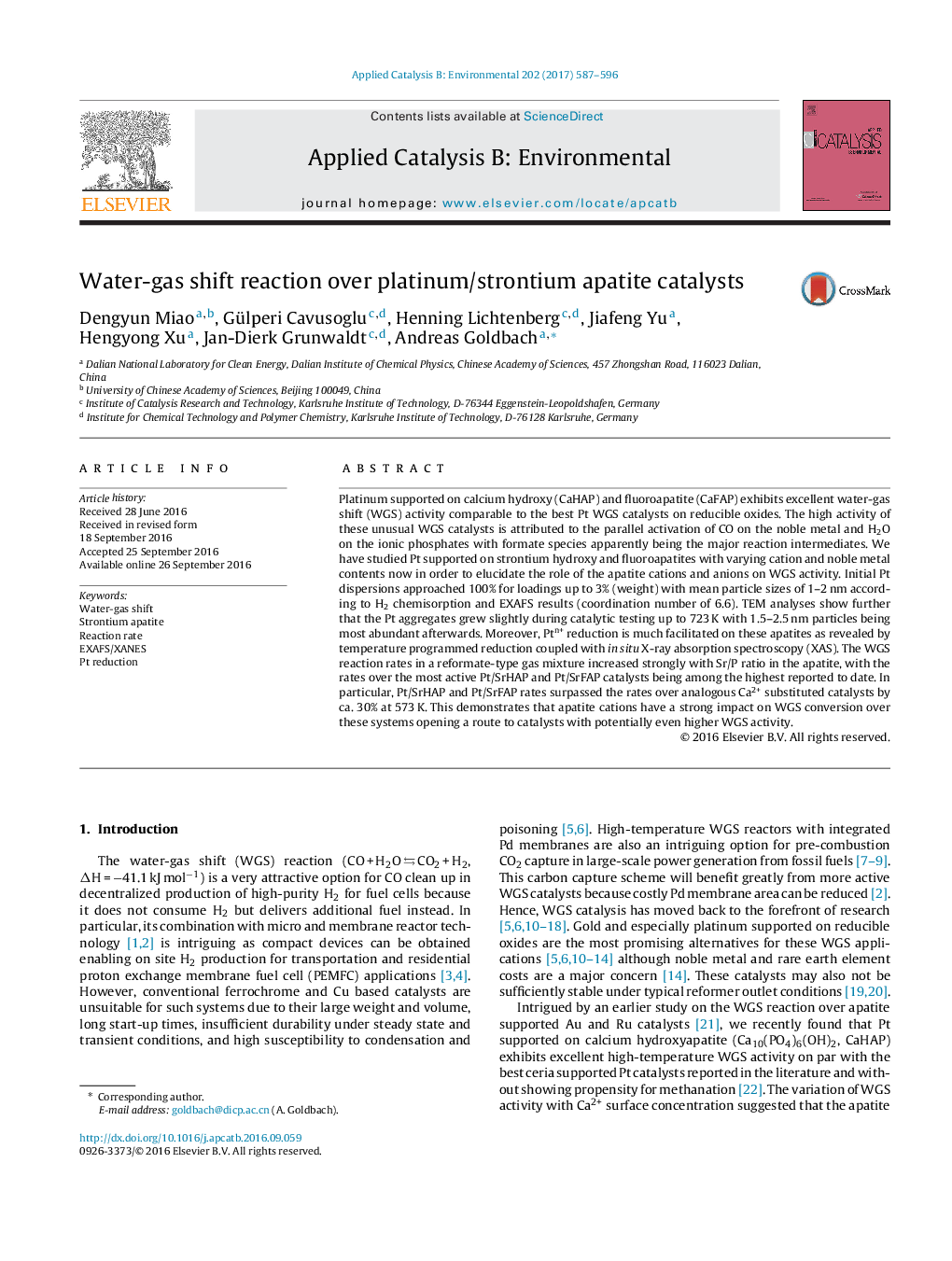| Article ID | Journal | Published Year | Pages | File Type |
|---|---|---|---|---|
| 6454909 | Applied Catalysis B: Environmental | 2017 | 10 Pages |
â¢Outstanding water-gas shift conversion rates.â¢Strong influence of apatite cations on WGS reaction rate.â¢Facile reduction of oxidized platinum.â¢Methanation activity below detection limits.
Platinum supported on calcium hydroxy (CaHAP) and fluoroapatite (CaFAP) exhibits excellent water-gas shift (WGS) activity comparable to the best Pt WGS catalysts on reducible oxides. The high activity of these unusual WGS catalysts is attributed to the parallel activation of CO on the noble metal and H2O on the ionic phosphates with formate species apparently being the major reaction intermediates. We have studied Pt supported on strontium hydroxy and fluoroapatites with varying cation and noble metal contents now in order to elucidate the role of the apatite cations and anions on WGS activity. Initial Pt dispersions approached 100% for loadings up to 3% (weight) with mean particle sizes of 1-2Â nm according to H2 chemisorption and EXAFS results (coordination number of 6.6). TEM analyses show further that the Pt aggregates grew slightly during catalytic testing up to 723Â K with 1.5-2.5Â nm particles being most abundant afterwards. Moreover, Ptn+ reduction is much facilitated on these apatites as revealed by temperature programmed reduction coupled with in situ X-ray absorption spectroscopy (XAS). The WGS reaction rates in a reformate-type gas mixture increased strongly with Sr/P ratio in the apatite, with the rates over the most active Pt/SrHAP and Pt/SrFAP catalysts being among the highest reported to date. In particular, Pt/SrHAP and Pt/SrFAP rates surpassed the rates over analogous Ca2+ substituted catalysts by ca. 30% at 573Â K. This demonstrates that apatite cations have a strong impact on WGS conversion over these systems opening a route to catalysts with potentially even higher WGS activity.
Graphical abstractDownload high-res image (130KB)Download full-size image
